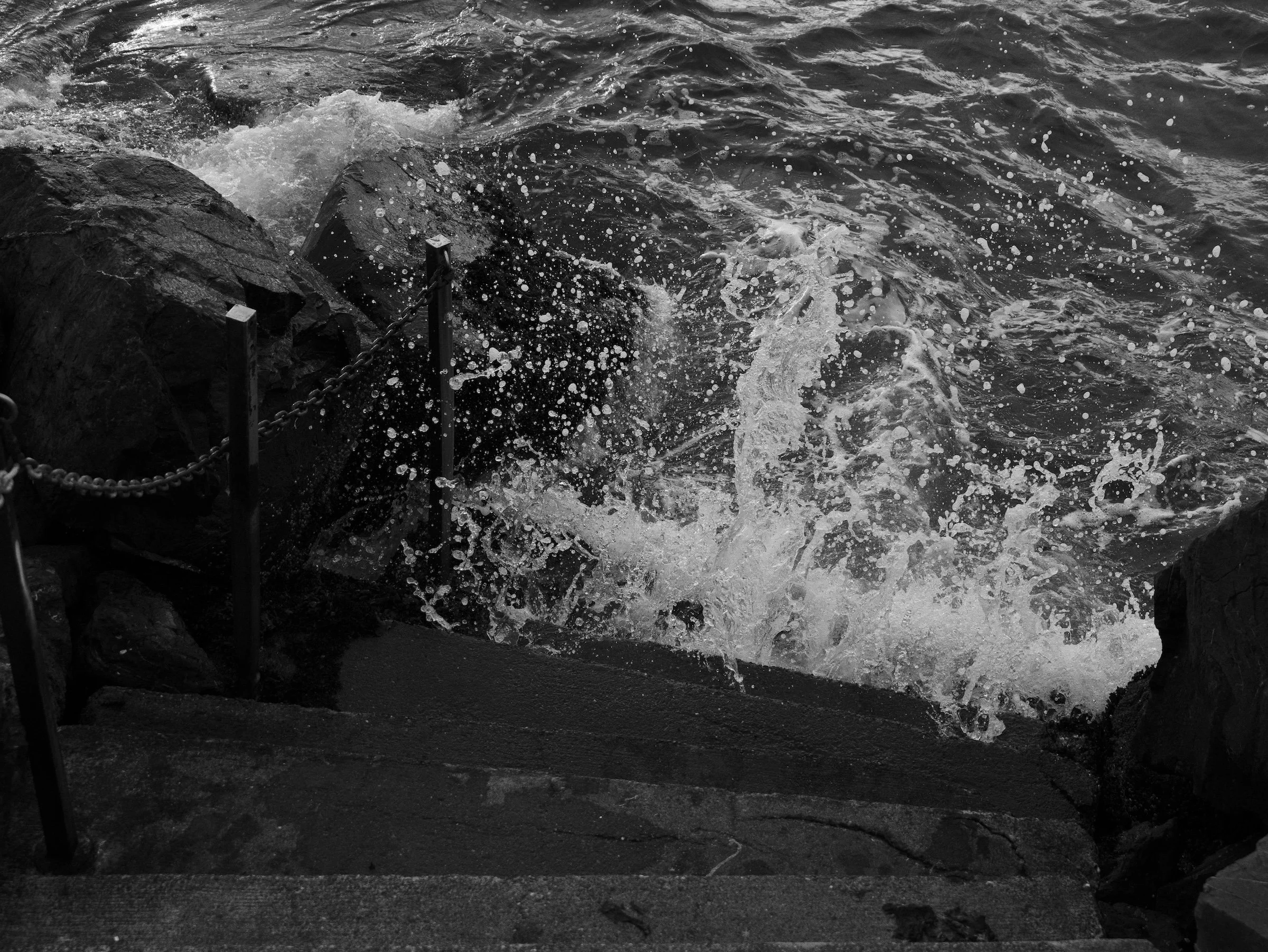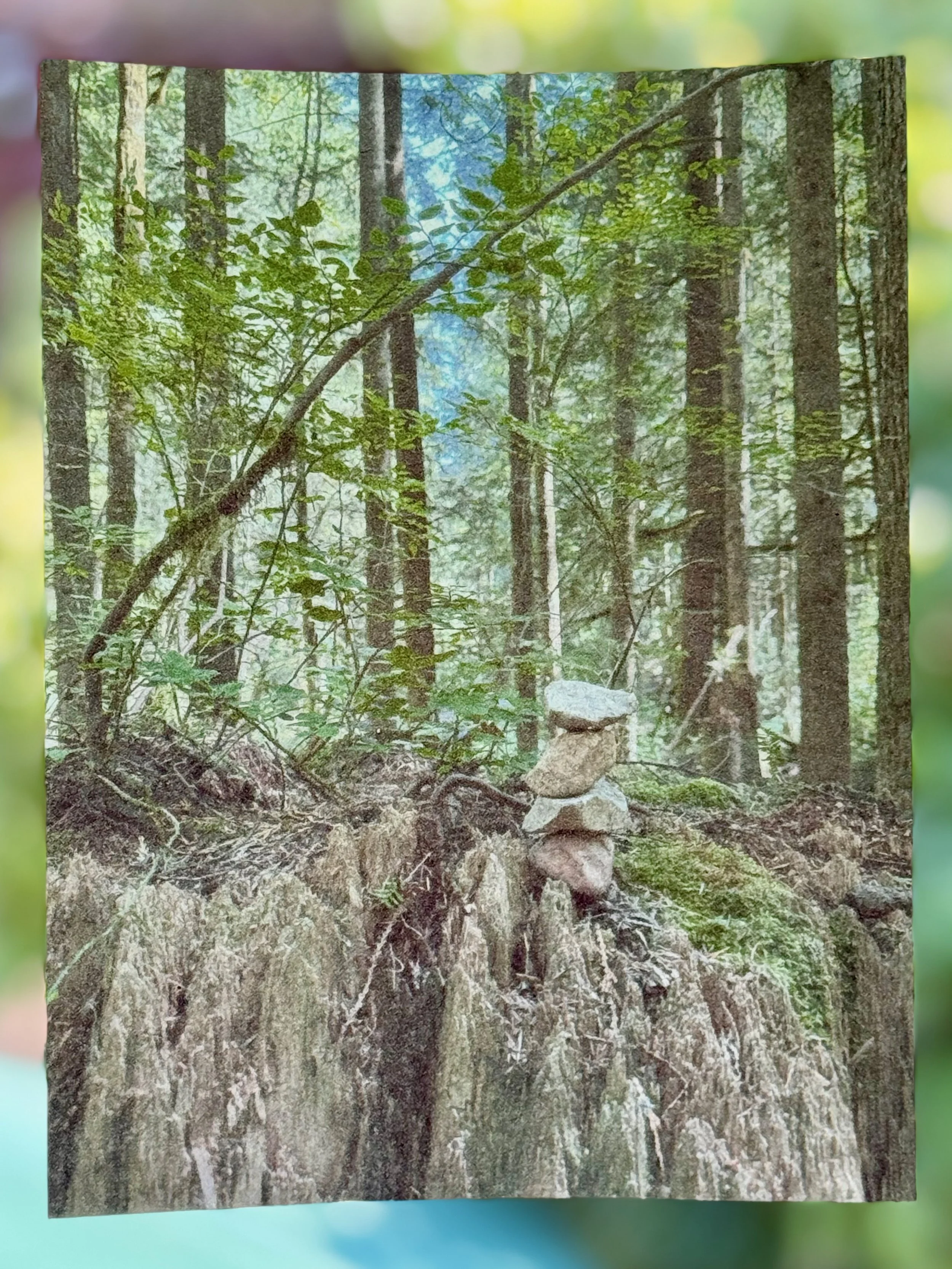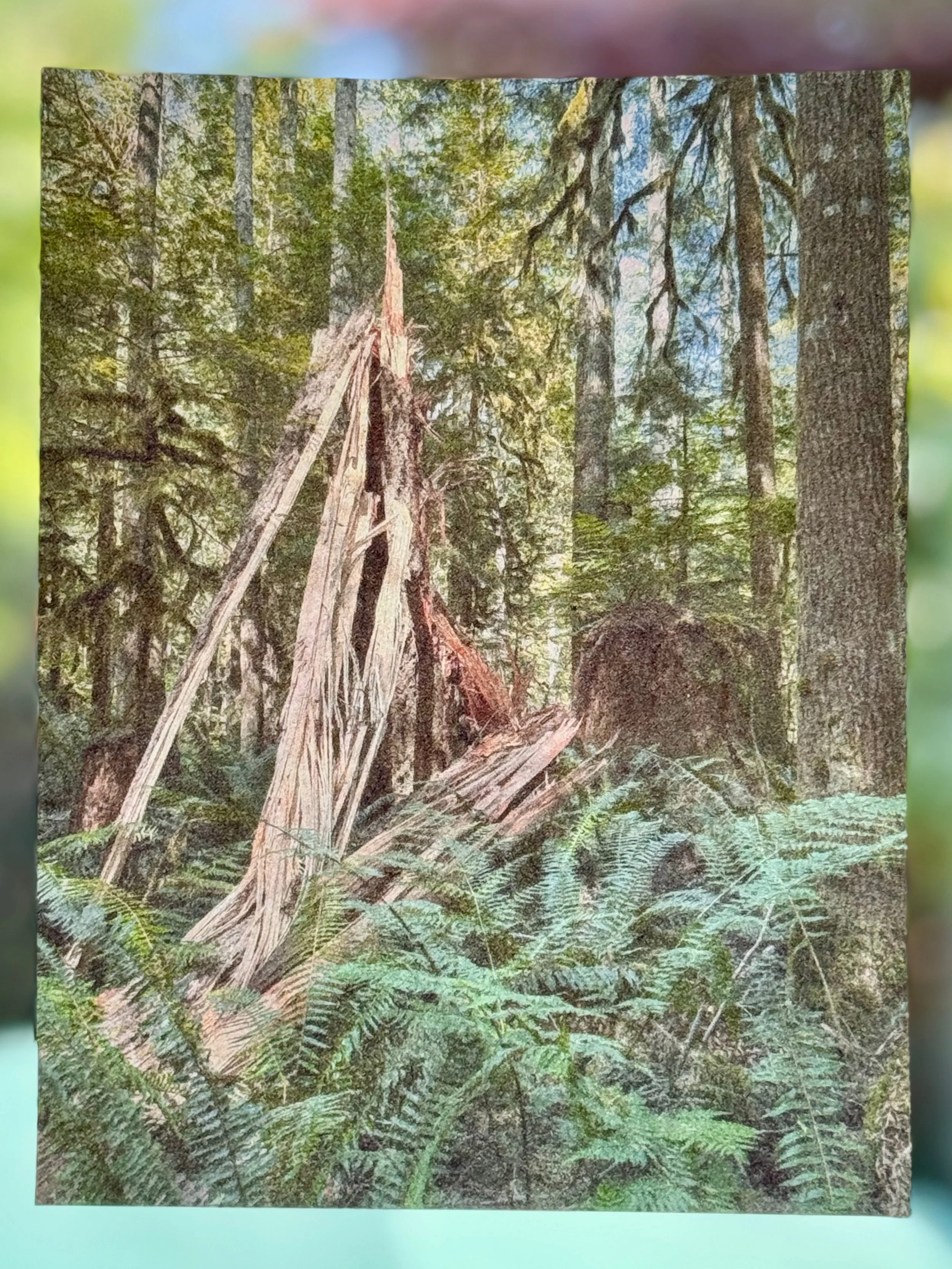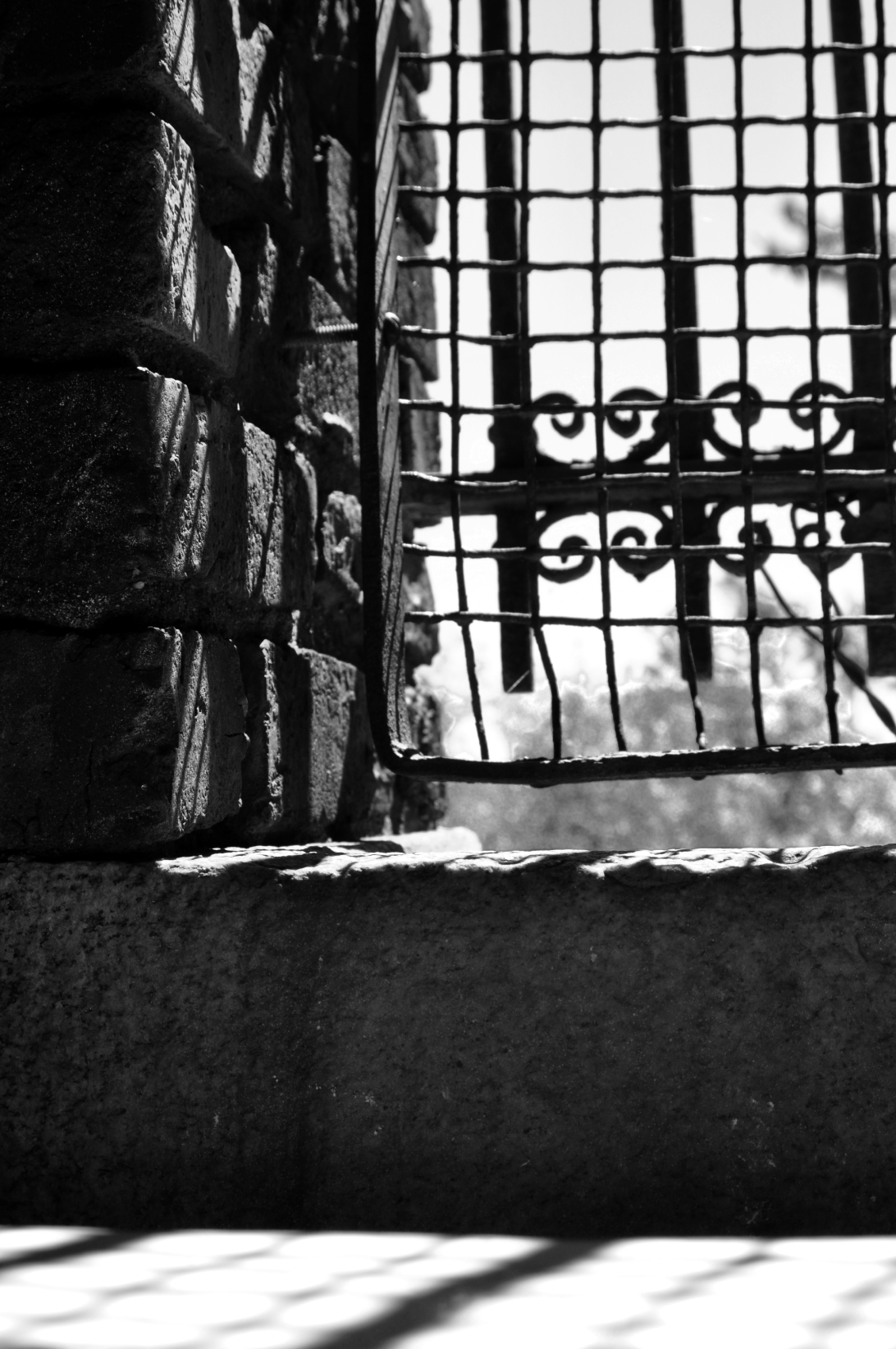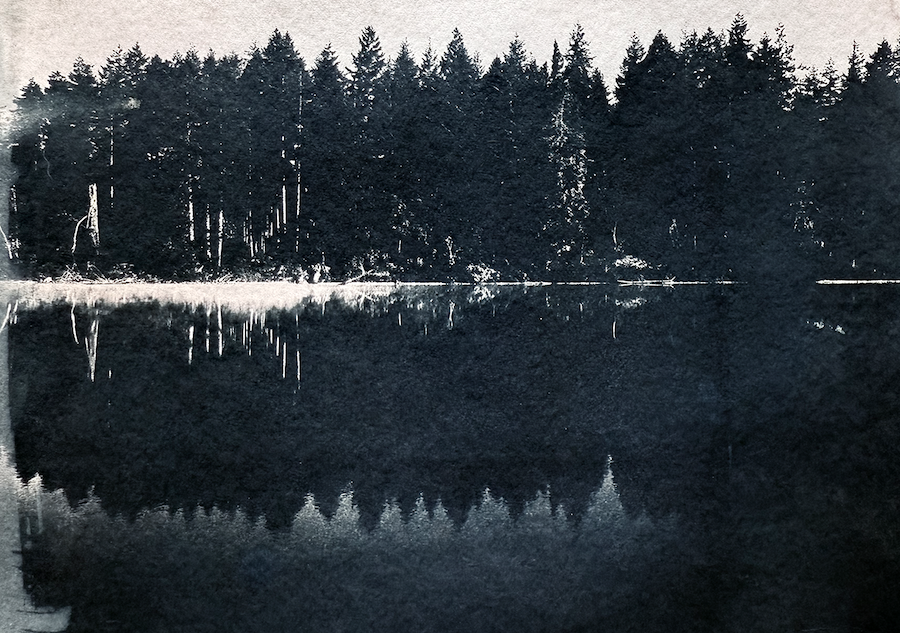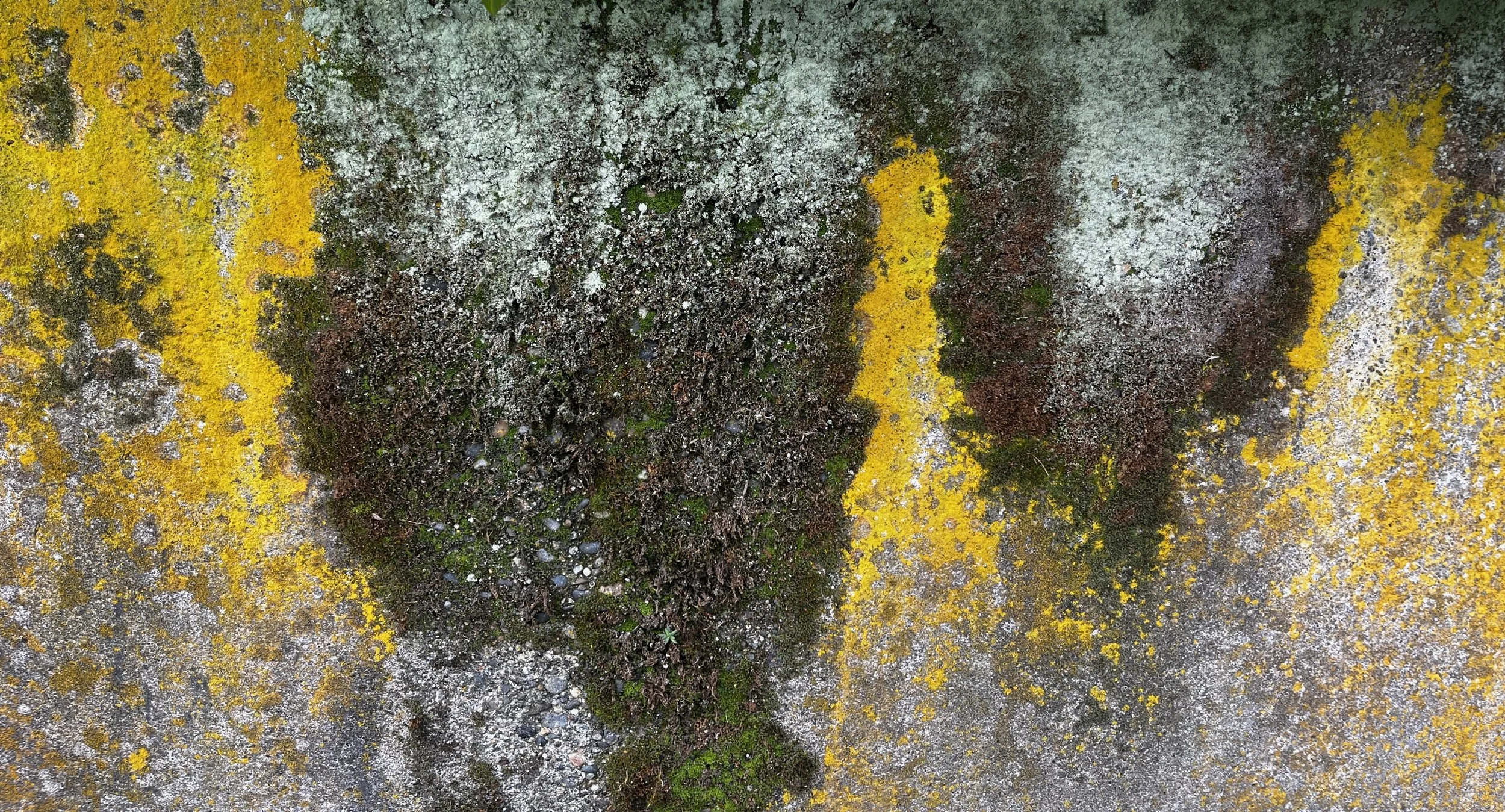Wabi Sabi: A Quiet, Subtle Approach to Social Change
This exhibition explores interpretations of wabi sabi through the work of Seattle-based photographers over a three-week period. Their photographs exemplify aspects of wabi sabi in their capturing a moment in nature and the conditions of other things that surround us.
Japanese adopted the expression wabi sabi six centuries ago to identify intersecting principles in Zen Buddhism, Tea Ceremony and an emergent aesthetic appreciation for an object or scene that is variably simple, rustic, humble, fleeting, mundane, tranquil as well as what reflects change or imperfection.
Like other positive sociocultural concepts from around the world—Aloha, ayurveda, hygge, inshallah, pura vida, ubuntu—wabi sabi offers a mindset that proposes an unconventional valuation of nature and things. It reframes western ideals of beauty and perfection; it offers the possibility of uplifting what is subtle, ordinary, authentic, weathered, decaying and old.
The beauty of humility , imperfection and the inevitable traces of change for all things—these artists explore the possibility of wabi sabi to expand, deepen, accept and repair both perceptions of ourselves, our engagement in society and mindfulness of human impact on the world around us.
Acknowledgments
In appreciation of the Photography Center Northwest (PCNW) staff at the Center’s heritage building, a dynamic space of creative resources in Seattle’s Capitol Hill, and the curious artists who participated in PCNW’s “Agent for Change Workshop: The Social Tool of Japanese Wabi Sabi.” These workshops are offered free to the public through PCNW’s Photography as an Agent for Change Series.

Leaf
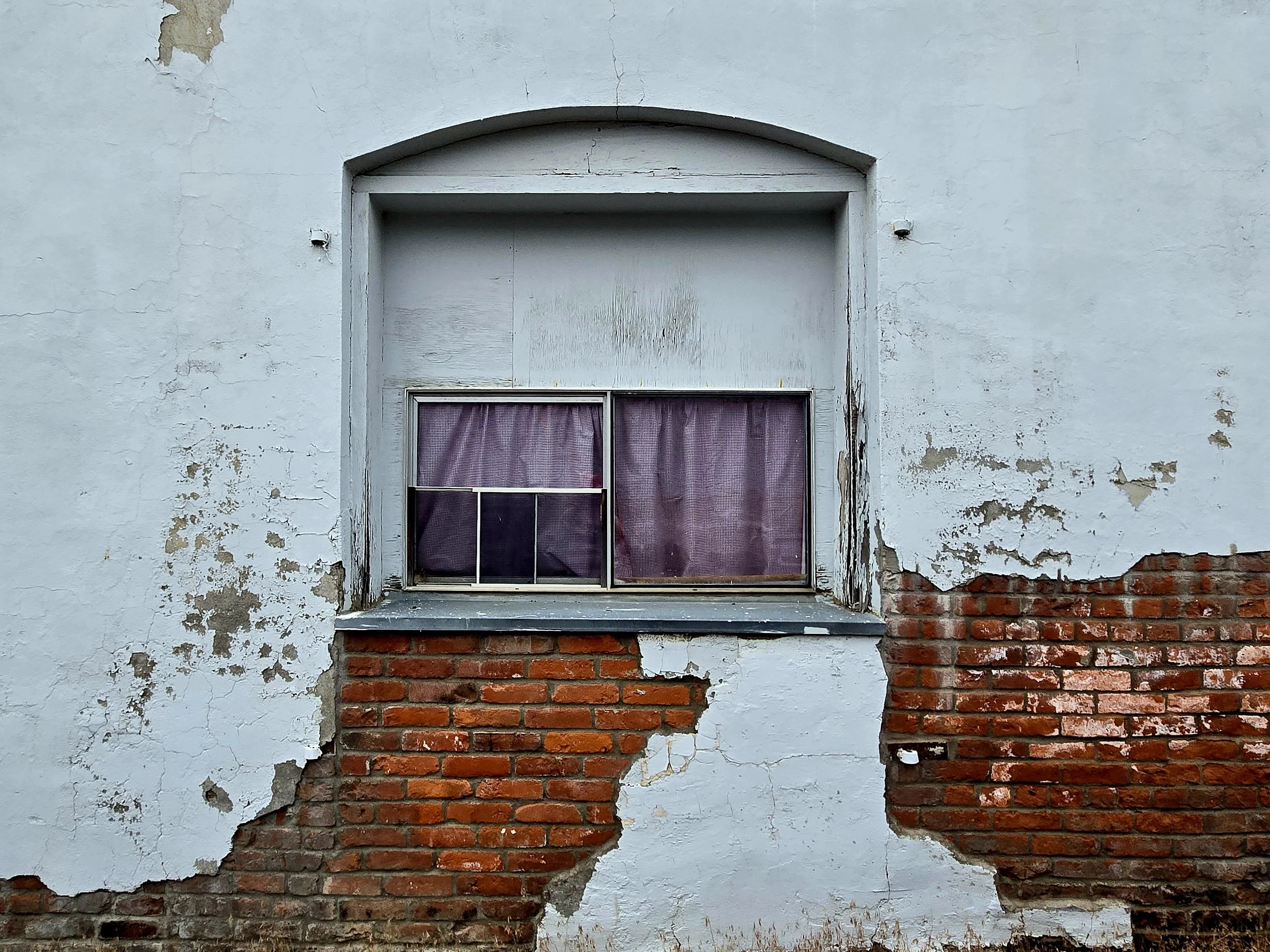
Window

Street Bouquet
Jana Erikson
Transience of the leaf’s journey and its rugged beauty.
Imperfection of something from yesteryear, and the
resilient nature of the building standing the test of time.
Impermanence of this scene shows the permanence of the sidewalk but frames the elegance of the weeds.
Resting Place
The old, worn-out boat, with its peeling paint and rust, is an example of sabi (寂), the beauty found in things marked by time. The boat’s simple, humble presence and its natural placement on the shore reflects wabi (侘). Shot with a Lumix S9 using a built-in monochrome profile
Garden Respite
The rusted, peeling chair shows sabi (寂), finding elegance in its age. The coiled rope on the seat and the simple, overgrown garden around it are perfect examples of wabi (侘). The scene's peaceful, unpolished charm captures a moment of kanso (簡素), or simplicity. Shot with a Nikon Z f using a built-in monochrome profile
Crashing Waves
The rough, weathered stones and steps represent sabi (寂), a tranquil beauty that comes with age and decay. The dynamic, splashing water represents the impermanent. Shot with a Lumix S9 using a built-in monochrome profile
Hongren Mei
All three of the images, in the spirit of wabi-sabi, celebrate the beauty of imperfection and the quiet passage of time. They each highlight something old and weathered—be it the rocks, the chair, or the boat—and find elegance not in a pristine state, but in their rustic character and history. The scenes also capture a sense of calm and impermanent, reminding us to find beauty in simple, unpolished moments just as they are.
Maddy Mondon
In my series Impressions, I explore how human beings can apply the practice of wabi sabi to bring about positive change. With my images, I invite the viewer to think about their impact on other people, the environment and even themselves. I believe that positive change begins when individuals slow down and take time to consider their values and actions. Shot with a Leica D-LUX 5
Above | Impressions 3 - Impressions 5
Impressions 7


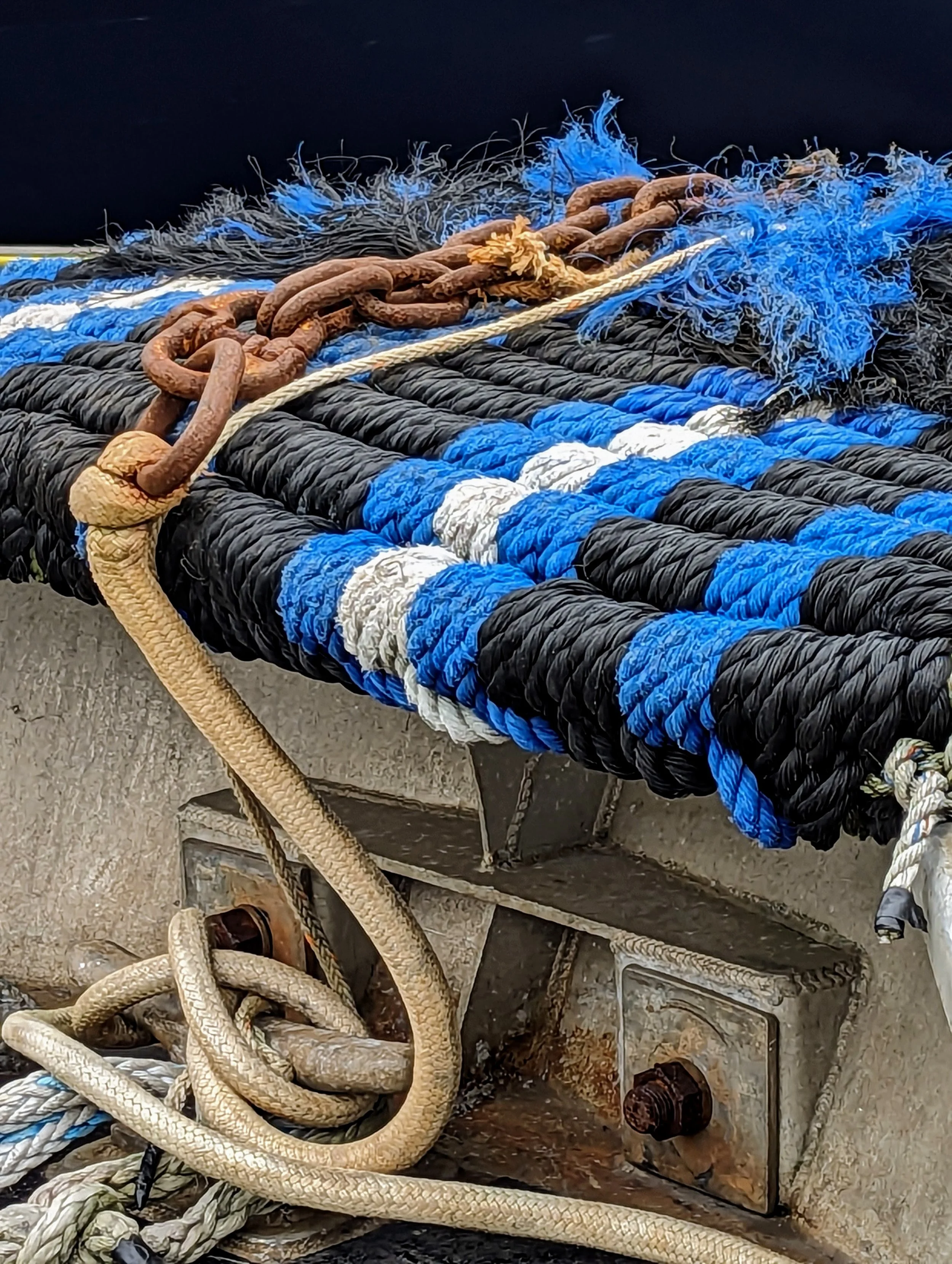
The WabiSabi of A Disappearing Industry 11
The WabiSabi of A Disappearing Industry 6
The WabiSabi of A Disappearing Industry 2
Ellen Craft
These images are from Seattle's Fishermen's Terminal, the home port for Seattle's commercial fishing fleet since 1914 and, since 2002, pleasure craft. It is home to hundreds of working fishing boats that spend months on the open sea off the coast of Alaska. At the center of Fishermen’s Terminal, a Fishermen's Memorial holds the inscriptions of more than 670 names to honor those who died while commercial fishing since 1900. I wanted to draw attention to the Fishermen's Terminal, because a decline in the commercial fishing industry has resulted in many inactive boats and gear that appear frozen in time at the Fishermen's Terminal. However, the beauty and functionality remains in the meticulously created gear, if often ravaged by decades of handling and the elements of the sun and sea.
Julie Biggs
I was inspired to practice seeing nature not as something fixed or flawless but as a living reminder of impermanence and transformation. To look closely is to notice the quiet rhythms of time—the way leaves weather, a stone is worn smooth, light shifts and creates fleeting forms. In this embrace, I discover a timeless beauty that does not resist change and beauty arises from non-resistance.
When I allowed aging, weathering and the cycles of growth and decay to reveal themselves as beautiful, I was able to soften into acceptance. In this way I believe wabi-sabi is a practice through which I can create a positive social change by seeing an opening in the world beyond the “I,” and drawing us into a shared sense of belonging with all that exists.
While hiking, my intention was to photograph glimpses of this beauty—an old tree split open yet still reaching toward the sky; water scattering reflections as if painting itself anew with every movement and a small cairn placed by another hiker settling in the nurse stump. I share these moments as not simply images but as invitations to pause, to see nature as teacher and mirror and to gently remind us of our own impermanence and the quiet grace within it.
Elf Cairn
Elf Cairn
Shot with iPhone 15, edited in Lightroom and printed on Kozo-shi (Japanese mulberry) DL/MM-2 and placed on a window and photographed again. The process gives way to layers of imagery, with each transfer becoming more ephemeral and fleeting.
Sky in Water
Split
Water Tower Series | Stairs
Water Tower Series | Window
Sarah Robertson
My photographs of a weathered water tower highlight the concept of wabi sabi by showing the natural wear that develops over time. Inside the structure, the changing light and shadows capture moments that are brief and never exactly the same. I focused on the standpipe and surrounding architecture to emphasize line, form, and asymmetry, elements that reinforce both the simplicity and imperfections present in the space.
Water Tower | Bricks
Shaughn Fitzgerald
When I first encountered this concept or philosophy, I thought, at last! For me, wabi sabi means to embrace imperfection, elements in nature, aging, decay, and accept that time affects everyone and everything. Wabi sabi celebrates ambiguity unapologetically. It’s acceptance that’s grounded and simple.
Through macrophotography and time outdoors, I feel alive and attuned to the universe. The intricate patterns and fragile wonders of the living world inspire me to slow down, observe closely and reflect more deeply. This stillness heals, offering balance against the faster pace of my digital life. Capturing fleeting moments reminds me of what is essential, while the imperfections of hand-printed images keep me grounded. My work celebrates the ephemeral richness of the earth and invites others to stop, notice and rediscover their own inner awareness.
Across the Lake
c Circle-Rock, wetcyanotype
Seaweed
Ellen Sollod
Wabi sabi is the concept of accepting transience and impermanence, finding beauty in the imperfect and a sense of continuous change or evolution. The premise of the workshop was wabi sabi as an agent of social change. I find the two concepts in conflict with one another in that an agent of social change implies an active choice or deliberate action that results in a different outcome; while wabi sari implies acceptance of what is. I found myself challenging the notion that wabi sari can be an agent for change as that seems antithetical to the basic concept—unless that the agent of change is acceptance. I do think that it has social value in most likely resulting in a less aggressive and argumentative political and social climate. Looking for peace and beauty in imperfections can help us accept what we cannot change. But passivity in the face of aggression is not the same.
Cambodia Vignette
Moss Rock PNW Landscape
Underground parking wall, University District, Seattle
Claire Cuccio
Wabi sabi opened my eyes to beauty that emerges outside of an ideal, standard, convention.
I see earthy, abstract splendor in these deteriorating walls. If these walls were paintings,
I’d hang them up.
Wabi sabi’s aesthetics of delicacy and humility also infuse my appreciation of humans who don’t fit societal norms.
Front yard retaining wall, FronMaple Leaf, Seattle
PARTICIPATING ARTISTS
Julie Biggs is a 4th generation Seattleite who feels intimately connected to the Pacific Northwest, native land of the Coast Salish. Inspired by Ansel Adams at the age of 14, she delved in Pacific Northwest landscape and nature photography as a lifetime passion. Julie cherishes her connection with nature and strives to capture the unique beauty and individuality of her subjects—be it a tree, rock, butterfly or mountain. Her approach seeks the essence of her subjects and expresses them with admiration and dignity. Julie earned her BS in fine arts with a focus in photography and MEd in the Creative Arts. She is also a mindfulness meditation teacher and focuses on the creative process and our unique creative expression.
Ellen Craft is an artist and a lifelong learner. Her education in the arts spans painting, drawing, printmaking, and photography and poetry, and she relishes exploring new media and subjects. Visual art gives her a more nuanced vocabulary for self-expression than the written word can provide. This deeper intimacy with her own feelings, in turn, helps maintain her mental health. Her goal is to draw attention to the beauty of our shared public spaces, including city and county streets, parks and gardens. https://ellenjcraft.art | Instagram @ellenjcraft
Claire Cuccio specializes in Asian arts, aesthetics and well-being through text, image and object, and visual and haptic group experiences. The PCNW wabi sabi workshop grew out of a well-being project in which she curated series of photographs capturing wabi sabi across Asia, and subsequently, in other cultures around the world. She ran pilots exploring the impact of extended viewing of particular image series in a meditational context and how they facilitated presence, contemplation, creativity and relief.
Jana Erikson was new to wabi sabi with this studio workshop. She discovered her photography often depicts wabi sabi, as she likes to capture images that normally would go unseen—that is, objects that most people would just walk by and never notice. Provoking people to pause and look at nature's imperfections or weathered objects that capture time. She aims to evoke emotions, mood and a sense of belonging in the images she captures.
Shaughn FitzGerald’s photography practice stretches from her analog darkroom days at the University of Washington to today’s digital explorations using smartphones and computers. While modern technology continues to intrigue her, Shaughn’s true passion lies in experimentation and alternative photographic processes. Her creative spark thrives where art and curiosity meet—blending digital and film, collaging with recycled materials, and merging imagery with fabric. In recent years, Shaughn has fallen head over heels for indigo and cyanotypes—their dreamy, inky blues and beautiful unpredictability invite the kind of unplanned magic in making that she loves most. Instagram @sullyfitzart
Hongren Mei embarked on his photography journey in early 2025. He was inspired by a trip to Japan and a love for its culture, which feels closely connected to his Chinese heritage. His photographic interests include landscapes, street scenes and wildlife. The wabi-sabi workshop further defined his creative vision and appreciation for simple, imperfect beauty.
Maddy Mondon is a photographer and Peer Support Specialist living and working in Seattle. Drawing from her experiences growing up in Appalachia, she uses her camera to process her emotions and explore generational gifts and trauma, family, womanhood, addiction and mental illness. Mondon received her BFA in Photography and Film from Virginia Commonwealth University Arts in 2025. Her work has been exhibited at The Anderson, as well as Greenhouse Gallery, in Richmond, Virginia. Instagram @raeographs
Sarah Robertson is a Seattle-based artist working in photography, mixed media and fiber arts. Her practice often centers on shape, line and contrast, with a recent focus on documentary photography. She discovered her passion for art in high school with the support of her photography teacher and her mom, later earning a BFA from Rochester Institute of Technology and an MiT from Seattle University. She taught photography and visual arts to high school students for twelve years. Her work has been shown at Nepantla Cultural Arts Gallery and M. Rosetta Hunter Art Gallery. Instagram @frayed_art_and_light
Ellen Sollod is Seattle-based interdisciplinary artist. Her work often explores the intersection of landscape and memory and weaves the personal and the political. Her approach regularly incorporates antiquated and alternative photographic methods as well as mixed media artist books. The work focuses alternately on the larger context and small details, shifting between expansive views and intimate observation to ground the viewer in the poetics of place. Her hope is that this encourages the viewer to stop to consider the Anthropocene and our role in altering the planet.
Her work is included in such collections as the Museum of Northwest Art, the Pacific Northwest Photographers’ Archive, Halley Ford Museum, Bainbridge Island Museum of Art Cynthia Sears Collection and a wide variety of artist book special collections across the country. https://www.sollodstudio.com | Instagram @visualcodex

